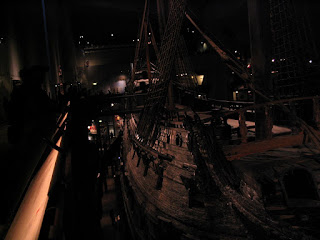
Yesterday, a new series about museums in the 21rst century aired on NPR's All Things Considered. It was their lead that caught my attention: More people visit museums each year than attend all major sporting events combined (baseball, basketball, football and hockey).
This seems counter-intuitive, but the numbers they cite are quite convincing (140 million verses 850 million). The most interesting part: as someone who studies museums I never even would have thought to do this calculation. I was already so clearly convinced that sports outweighed museums as an influential institution in this country that I was blind to the idea.
I shudder with the impact this statement has on me. I am not devoting my life to something frivolous. For several years, I would get into vicious conversations with an old college buddy who studies sports. He would argue that the role professional sports played in people's lives was hugely important. That the phenomenon of sports was so widespread and far-reaching that you couldn't argue with its potential to impact and change lives. That might be true, but his subtext was always "and museums in no way stack-up to sports," a statement that, now, no longer seems true. Museums are right up there. 850 million right up there.
Of course, the sports number is not accounting for people that watch on TV, but the museum number is not accounting for those reached by museums' outreach efforts. Right here in my own community, the local science museum often uses its resources to put on free community events (science walks, talks, themed crafts and demonstrations at street fairs) that reach many more people than those that actually find their way into the museum. The attendance number also does not account for the outreach museums do at schools, taking their programs into classrooms - an outlet that reaches millions of schools kids every year.
So, people of museums, raise your heads high. Your work matters. It matters 850 million times.




